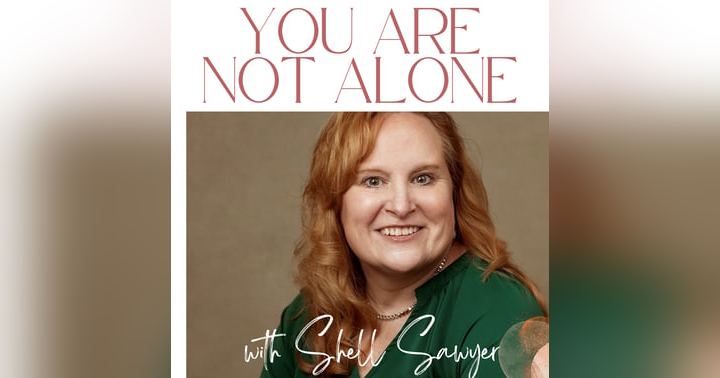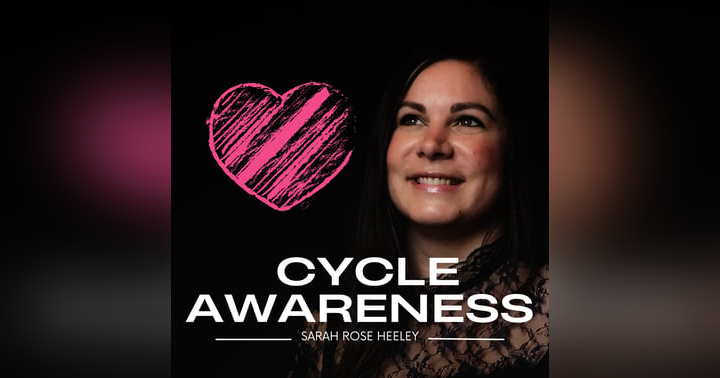Reconnecting with Your Inner Child for Healing

This blog post explores the powerful concept of Innocent Healing, as introduced by Gina Anayana, and how nurturing your inner child is fundamental to your healing journey. We'll delve into practical techniques for reconnecting with your inner child, addressing past traumas, and embracing the transformative power of breathwork and sound healing. This post expands on the themes discussed in our latest podcast episode, How to Heal Yourself and Find Your True Path, where Gina shared her profound insights and personal journey.
Understanding Innocent Healing: Gina Anayana's Approach
Gina Anayana's Innocent Healing is a holistic approach that recognizes the profound impact of our childhood experiences on our adult lives. It posits that unresolved traumas and emotional wounds from our younger years often manifest as patterns of behavior, limiting beliefs, and emotional struggles in adulthood. Innocent Healing emphasizes the importance of compassionately reconnecting with our inner child – that innocent, vulnerable part of ourselves that may have been neglected, hurt, or misunderstood. By acknowledging and validating the experiences of our inner child, we create a space for healing and personal growth. This approach goes beyond simply understanding the past; it involves actively nurturing and comforting that inner child, offering the love, support, and understanding that may have been lacking in the past. It's about creating a safe and loving internal environment where healing can truly take place.
Practical Techniques for Reconnecting with Your Inner Child
Reconnecting with your inner child isn't about reverting to childish behaviors; it's about accessing the wisdom and innocence that resides within. Several techniques can facilitate this process. Journaling can be a powerful tool. By writing letters to your inner child, expressing your love, understanding, and forgiveness, you can begin to heal past wounds. Guided meditation and visualization exercises can also help you connect with your inner child, allowing you to explore emotions and experiences from your past in a safe and supportive environment. Engaging in activities you loved as a child – playing games, drawing, listening to music – can tap into a sense of joy and playfulness, reminding you of your innate capacity for happiness. Spending time in nature can also be profoundly healing, providing a sense of peace and grounding.
Addressing Past Traumas Through Inner Child Work
Many of us carry unresolved traumas from our childhood, and these traumas can significantly impact our adult lives. Inner child work provides a safe and effective way to address these traumas. By engaging in practices like journaling, meditation, and visualization, we can gently and compassionately explore the emotions and experiences associated with these traumas. This process isn't about dwelling on the negative; it's about acknowledging and validating our past experiences, recognizing the impact they've had on us, and ultimately, releasing the emotional burdens they carry. It’s crucial to remember that healing is a process, and it takes time and patience. Seeking support from a therapist or counselor specializing in trauma-informed care can be invaluable during this process.
The Role of Breathwork and Sound Healing in Innocent Healing
Breathwork and sound healing are powerful modalities that complement inner child work. Breathwork techniques can help us release trapped emotions and reconnect with our bodies. By consciously focusing on our breath, we create a space for emotional release and greater self-awareness. Sound healing, utilizing instruments like singing bowls or tuning forks, can create vibrational shifts that promote relaxation and emotional balance. The harmonious sounds and vibrations can help soothe the nervous system and create a sense of peace and well-being, fostering a safe environment for exploring the emotions associated with past traumas. The combination of these modalities with inner child work can lead to profound and lasting healing.
Gina Anayana's Personal Journey and Insights
Gina Anayana's personal journey is a testament to the power of Innocent Healing. She has openly shared her experiences, offering a beacon of hope and inspiration to others on their healing journeys. Her insights stem not just from theoretical knowledge but from lived experience, making her message all the more resonant. Her vulnerability in sharing her story is a powerful example of the courage required to confront past wounds and embrace a path towards wholeness. This vulnerability also highlights the importance of community and shared experiences in the healing process.
Building Community and Sharing Stories of Healing
Healing is not a solitary journey. Connecting with others who share similar experiences can provide invaluable support, validation, and hope. Sharing our stories can create a sense of community and help break down the stigma surrounding mental health and trauma. By listening to and sharing our stories, we not only offer support to others but also foster a sense of belonging and empower ourselves in the process. Gina Anayana's work underscores the importance of creating spaces for these narratives to unfold, fostering a sense of collective healing and empowerment.
The Importance of Vulnerability and Empowerment in Healing
Embarking on a healing journey requires courage and vulnerability. It involves confronting difficult emotions and memories, acknowledging past hurts, and embracing our imperfections. This vulnerability, however, is not a sign of weakness but a testament to our strength. By embracing our vulnerability, we create space for growth and transformation. As we heal, we become empowered to live more authentically and create lives aligned with our values and aspirations. The healing journey is not about erasing the past, but about integrating our experiences and learning from them.
Embracing Love, Light, and Positivity in Your Healing Journey
Cultivating a loving and compassionate relationship with ourselves is crucial to the healing process. This includes embracing self-compassion, recognizing our inherent worthiness, and forgiving ourselves for past mistakes. Surrounding ourselves with positivity, practicing gratitude, and focusing on our strengths can significantly enhance our healing journey. It's about nurturing our inner child with the love and acceptance they deserve, fostering a sense of self-worth and belief in our capacity for healing and growth. This approach is not about ignoring difficulties; it’s about creating a foundation of love and self-acceptance from which to approach challenges.
Conclusion: Cultivating a Loving Relationship with Your Inner Child
Reconnecting with your inner child is a powerful step towards healing and self-discovery. By embracing the principles of Innocent Healing, we can create a path towards wholeness, integrating our past experiences into a narrative of growth and self-acceptance. This process, as explored in our podcast episode, How to Heal Yourself and Find Your True Path, involves self-compassion, addressing past traumas, and nurturing the innocent, vulnerable part of ourselves. Through practical techniques like journaling, meditation, breathwork, and sound healing, combined with the support of a loving community, we can cultivate a loving relationship with our inner child and embark on a journey of profound healing and self-empowerment. Remember, healing is a journey, not a destination, and the process is as important as the outcome.
















